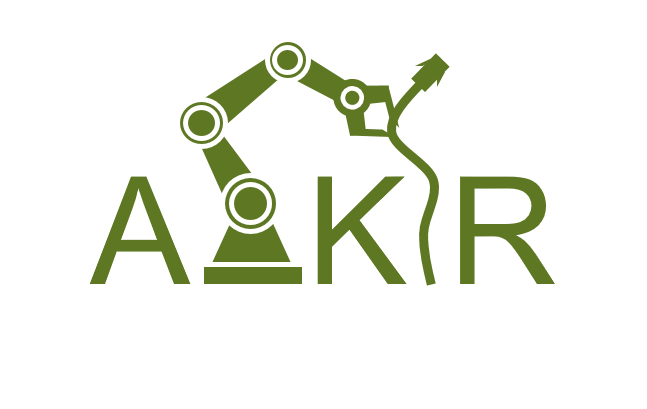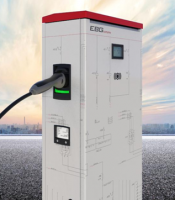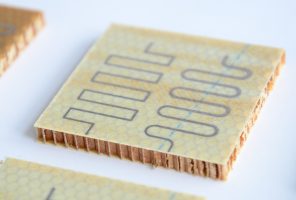Index
Deep learning-based automated optical inspection of crimp connections for holistic and smart quality assessment

The project OptiCrimp is funded by the federal ministry for economic affairs and climate action. The goal is the development of an automated optical inspection (AOI) system for the holistic quality assessment of crimp connections. The project started in March 2022 and is carried out by the institute FAPS and the company Schäfer Werkzeug und Sondermaschinenbau GmbH.
The project OptiCrimp addresses current requirements in wire and terminal processing such as higher quality, traceability, and automation. The development goal is an AOI system which can be flexibly integrated into crimping machines to assess the quality of produced crimp connections inline. The to-be-developed AOI system captures images of crimp connections on-the-fly without compromising machine tact time. The novelty of the project is the implementation of deep learning as the key technology for real-time image data processing. The quality results will be visualized at the machine interface for trouble-shooting by the operator and quality-relevant data are stored for traceability of each crimp connection. The company Schäfer Werkzeug und Sondermaschinenbau GmbH is responsible for the development of the AOI system on a hardware level. The institute will develop and implement deep learning models and algorithms for image data processing.
AsKIR: Automated manufacturing of safety-critical wiring harnesses by artificial intelligence and human-robot collaboration

The wiring harness is an important component for the execution of safety-critical driving functions in autonomous vehicles. Automated manufacturing processes are therefore significant to ensure a high degree of reproducibility, traceability, and cost-effectiveness. However, the automated handling of cables still constitutes a challenge due to the cable’s deformable behavior and degrees of freedom. These characteristics result in high requirements for the development of sensors, actuators, and software for automation solutions.
The aim of the project ‘Automated manufacturing of safety-critical wiring harnesses by artificial intelligence and human-robot collaboration’ (AsKIR) is the development of a robot system with machine learning-based process monitoring and quality control for the automated final assembly of wiring harnesses. In cooperation with the company Abele Ingenieure GmbH, new manufacturing concepts using human-robot collaboration are evaluated and an innovative end effector for the handling tasks inserting and routing of crimped cables is developed.
The institute FAPS is responsible for
- the continuous data flow from engineering to production,
- the multi-sensor data fusion for process monitoring and optimization of the handling tasks, and
- the ML-based data evaluation for quality assessment of crimped wires and end-of-line quality inspection.
EFFEKT: Efficient cabin through digital connection of technologies and systems
The aim of the EFFEKT research project is to increase passenger comfort while at the same time improving efficiency through the integration of innovative processes and the intelligent connection of data structures. Cost- and technology-optimized production is also an important aspect of this application-oriented and broad-based undertaking.
The chair FAPS contributes to this among other things through the following measures:
- Investigation of the high-frequency properties of conductive structures generated by means of LDS on various industry-relevant materials
- Development and integration of antenna and sensor structures
- Investigation of the mechanical strength, temperature resistance and flame retardancy of LDS-compatible polymers approved for aviation
- Development and testing of a technology demonstrator in an aircraft-like environment (cabin mockup)
Mikro-Druck-Stator (MiDruStat): Development of a brushless DC micromotor made of printed ferrite foils
Electrically operated micromotors with a diameter of only a few millimetres are already being used in a wide range of applications such as automation technology, robotics or medical technology. However, the conventional winding of stator coils is reaching its production limits with increasing miniaturization. This leads to high reject rates and reduced efficiencies. Within the MiDruStat project, an innovative manufacturing approach is to be investigated by printing the stator system using conductive inks on ferrite foils.
The chair FAPS is investigating the following aspects among others:
- Analysis of the material properties of different ferrite foils and their suitability for printing with conductive inks and pastes
- Development of a piezo jet or aerosol jet manufacturing process to produce the printed coils
- Development of processes for winding, sintering and contacting the printed stator systems
SUPPLy: Simultaneous product and process development of a charging station outlet module suitable for automation

Of particular relevance to the success of electromobility is the guarantee of a nationwide charging infrastructure, which, with an increasing number of electric vehicles, can only be achieved by a correspondingly extensive provision of suitable charging points. The process of manufacturing these charging points involves the assembly of numerous flexible components and small electronic parts that cannot be significantly automated without extensive effort. Due to the unfavorable cost-benefit ratio to date, the installation and connection of the electrical, electronic, mechanical and optical components was largely carried out by production employees and/or technicians.
After analysing existing charging station designs, the SUPPLy project is working on further product and process developments in order to achieve a significantly increased degree of automation and sufficient scalability on the assembly side. These findings form the basis for replacing the manufacturing processes of charging columns, which were previously characterized by manual activities, with automated processes suitable for large-scale production. In the course of this, design guidelines aiming at an automation-compatible product design will be elaborated and evaluated by practical application.
- Automation-oriented product development of charging stations
- Process development for assembly and connection of high-voltage modules
- Design guidelines for automation-compatible product design
- Test and optimization of the outlet module, prototype implementation
MRO-PrinE: Maintenance, Repair and Overhaul of Printed Electronics

The aim of the MRO-PrinE research project – Maintenance, Repair and Overhaul of Printed Electronics – is to develop suitable and fast maintenance and repair processes for printed electronics on interior components. In addition to the damage patterns of printed electronics, the influence of damage to the sandwich substrate materials on the printed electronics is also considered. In addition, procedures are being developed that enable the separation of substrate and printed electronics and thus ensure recycling of the raw materials.
The research project focuses on the following topics:
- Detection of damage mechanisms, both for cabin components and for applied printed structures
- Concept development for rapid damage detection
- Development of fast and efficient repair and maintenance concepts for local damages of functionalized cabin components
- Reliability investigation for printed structures with and without damage and repair measures
- MRO instructions for functionalized interior components
ProMilL: Process and assembly optimization through intelligent cabin linings

The aim of the ProMilL research project – process and assembly optimization through intelligent cabin linings – is to design intelligent production in final assembly. The aim is to ensure that the condition of cabin linings is recorded via sensor networks. This is made possible by integrating printed antennas and sensor technology into lining elements. Thus, on the one hand, the exact position of the components as well as information on installation in the final assembly can be transmitted, and on the other hand, possible readjustments to the cladding elements can be detected after the first fly.
The research project focuses on the following aspects:
- Integration of sensors and antennas in cabin linings using digital printing technologies, such as aerosol jet and piezo jet
- Implementation of printed sensor and antenna structures
- Characterization of functionalized sandwich structures
- Reduction of assembly and manufacturing processes and improved process monitoring within the final assembly line
- Predictive maintenance through real-time data acquisition of cabin components
